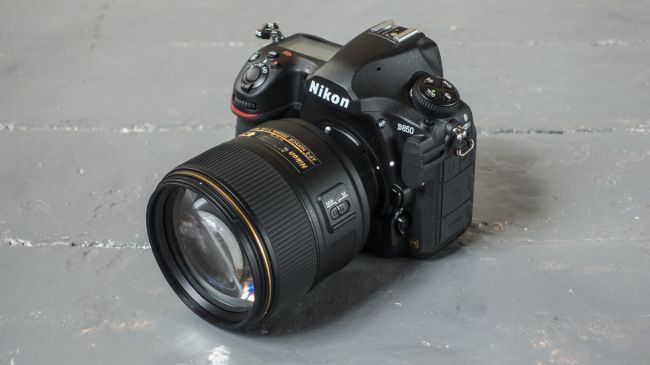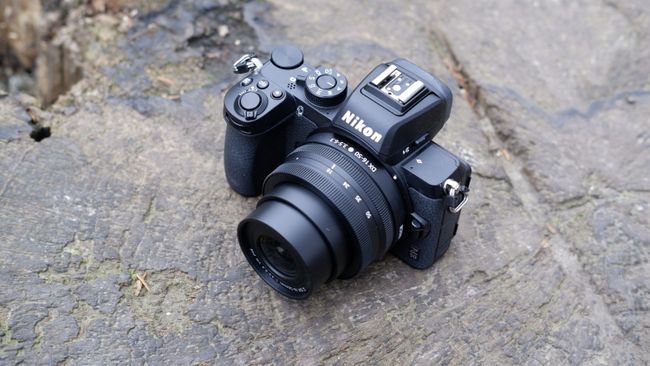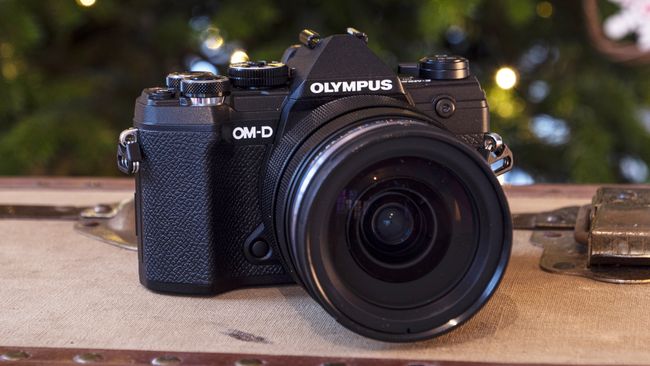CAMERAS
TOP 5 BEST CAMERAS IN 2020
TOP 5 BEST CAMERAS IN 2020
1. Nikon Z6
Nikon have caused quite a splash with their new Z range, with this Z6 serving as an all-purpose entry point into this exciting new Mirrorless system. This FX-format body features the same new mount as its sibling, the Z7, with this model being based around a sensor of 24.5 megapixels. This comparatively lower-resolution sensor is the best fit for a broad range of lighting conditions, with a standard ISO range of 100-51200. As well as built-in vibration reduction, which pairs with the low-light prowess to provide users with exceptional handheld shooting performance, the Z6 is equipped with 4K UHD movie recording abilities, making it a good fit for lovers of stills, and video alike.
- 24MP Fullframe FX-format CMOS Sensor
- 273 Focus Points
- 3.6MP Viewfinder
- "5 Stop" In-Camera Vibration Reduction (VR)
Type: Mirrorless | Sensor size: Full-frame CMOS | Resolution: 24.5MP | Lens: Nikon Z mount | Viewfinder: EVF | Screen type: 3.2-inch tilting touchscreen, 2,100,000 dots | Maximum continuous shooting speed: 12fps | Movies: 4K | User level: Intermediate/expert
2. Fujifilm X-T30
As soon as the X-T3 was announced we could pretty much guarantee what the specification of the X-T20’s replacement would be. And sure enough, the Fuji X-T30 has the same sensor and processing engine combination. That means that you can get the same image quality as from the X-T3 from a smaller, more affordable camera.
Fujifilm has also made a few handling improvements upon the X-T20. The most noticeable is the exchange of the navigation pad for a joystick controller. It’s a great move.
The only handling niggle is with the placement of the Q button. It’s a pain but it’s outweighed by the superb autofocus system, attractive colours, high-end 4K video options and all-round great performance.
This ravishing retro option squeezes in plenty of high-end tech
Sensor size: APS-C | Resolution: 26.1MP | Viewfinder: 2,360K dots | Monitor: 3.0-inch tilt-angle touchscreen, 1,040K dots | Autofocus: 425-point AF | Maximum continuous shooting rate: 8fps | Movies: 4K at 30p | User level: Expert
3. Sony A7 III
Quality results partnered with speedy operation
Up to 10fps with Silent or Mechanical Shutter
The a7 III is equipped with a refined image processing system that allows it to capture full 24.2MP images at up to 10 fps with continuous and accurate AF/AE (autofocus and auto exposure) tracking for up to 177 Standard JPEG images, 89 compressed RAW images or 40 uncompressed RAW images. This high speed 10 fps mode is available with either a mechanical shutter or an electronic shutter for completely silent shooting. The a7 III can also shoot continuously at up to 8 fps in live view mode with minimal lag in the viewfinder or LCD screen. These high-speed options ensure that fast moving subjects can be captured with extreme accuracy and incredible image detail.The a7 III features a world-class autofocus system comprised of 693 focal-plane phase-detection AF points that cover approximately 93% of the image area, 425 contrast AF points and reliable Eye-AF. When combined, both contrast and phase detection AF points form the 4D FOCUS ™ hybrid AF system for wide, fast, reliable AF that locks on and stays locked on. This advanced system delivers AF acquisition in about half the time as the a7 II in low-light conditions with tracking that is approximately 2 times more accurate as well. The acclaimed Eye AF feature is also approximately twice as effective, and is available when utilizing AF-C mode and with Sony’s A-mount lenses with an adapter.
5-step, 5-axis in-body image stabilization
The 5-axis in-body SteadyShot™ image stabilization system has been fine-tuned to support high-resolution shooting capacity, resulting in an image stabilization system at 5-step shutter speed advantage. Camera shake is effectively compensated on 5 axes: pitch and yaw that have the largest overall impact on image quality; X and Y shift that is most apparent at high magnification, and roll that can ruin night shots and movies. Stabilization is applied to the live-view image, making it easier to frame fast-moving subjects. Effective stabilization is provided for movies as well as stills, and for A-mount lenses9 attached via a mount adapter.
Secure and versatile dual SD media slots
Two SD media card slots are provided for still and movie storage (one slot for SD cards or Memory Stick) with the lower card slot being UHS-II compatible for fast write speed. Still or movie data can be simultaneously recorded to both cards for backup, or RAW images can be recorded to one card while JPEG images are recorded to the other. It is also possible to record stills and movies to different cards. Relay recording automatically switches to the second card when the first card is full. Data can be copied between cards while in the camera, for convenient back-up. Sony SF-G series UHS-II SD cards are ideal for situations where maximum transfer speed is required.
Sensor size: Full-frame | Resolution: 24.2MP | Viewfinder: 2,359K dots | Monitor: 3.0-inch tilt-angle touchscreen, 921K dots | Autofocus: 693-point AF | Maximum continuous shooting rate: 10fps | Movies: 4K at 30p | User level: Intermediate/expert
4. Nikon D850
Resolution, speed and traditional controls - this DSLR still delivers
Type: DSLR | Sensor size: Full-frame CMOS | Resolution: 45.4MP | Lens: Nikon F mount | Viewfinder: Optical | Screen type: 3.2-inch tilting touchscreen, 2,359,000 dots | Maximum continuous shooting speed: 7fps | Movies: 4K | User level: Intermediate/expertWhen Nikon introduced the D800 and D800E, it set a new benchmark for DSLR image quality and super high resolution photography that approached medium format. Now, five years later, Nikon proudly introduces the next evolution in high resolution DSLRs, a camera that allows photographers to capture fast action in 45.7 megapixels of brilliant resolution. With remarkable advancements across the board—sensor design, autofocus, dynamic range, sensitivity, Speedlight control, battery life, shutter and mirror drive mechanisms, Silent Photography in Live-View mode, focus shift capability and more—this is quite possibly the most impressive, well-rounded DSLR yet.
Resolution, speed and traditional controls - this DSLR still delivers
Nikon's first back-side illuminated (BSI) full-frame sensor with no optical low-pass filter!
At the heart of the D850 is a Nikon designed sensor like none before it—a back-side illuminated (BSI) FX-format full-frame CMOS image sensor with 45.7 megapixels and no optical low-pass filter. A marvel of ingenuity, it achieves extraordinary image quality, enhanced light gathering efficiency, faster data readout and truer color. And with such a dense array of pixels, there's virtually no risk of moiré
At the heart of the D850 is a Nikon designed sensor like none before it—a back-side illuminated (BSI) FX-format full-frame CMOS image sensor with 45.7 megapixels and no optical low-pass filter. A marvel of ingenuity, it achieves extraordinary image quality, enhanced light gathering efficiency, faster data readout and truer color. And with such a dense array of pixels, there's virtually no risk of moiré
5. Nikon Z50
The perfect mid-range mirrorless upgrade for DSLR owners
Type: Mirrorless | Sensor size: APS-C | Resolution: 20.9MP | Lens: Z-mount | Screen type: 3.2-inch tilting touchscreen, 1,036,080 dots | Viewfinder: EVF | Maximum continuous shooting rate: 11fps | Movies: 4K | User level: EnthusiastI've been shooting Nikon DSLRs since the D40 came out, and currently shoot with D700 and D750 FX bodies which have served me well for years.
In the past, I've rented a Z6—Nikon's first foray into pro-level mirrorless cameras—for a couple events, and I also own a Sony a6000 and have rented a Sony A7iii for a couple events. I have been very interested in the relentless march of technology in photography. From a couple old nice film bodies I started with, to the earliest digital cameras which had terrible IQ but the ability to instantly review and share photos, to DSLRs which quickly surpassed the quality of 35mm film photography, it has been an eventful 25 years.
Many mirrorless advocates have already pronounced DSLRs dead, and for some purposes, I guess, they are. But there are still some types of photography where I have better success shooting with my DSLRs, mainly low-light event photography and sports shooting.
THANKS FOR VISITING.
The perfect mid-range mirrorless upgrade for DSLR owners
In the past, I've rented a Z6—Nikon's first foray into pro-level mirrorless cameras—for a couple events, and I also own a Sony a6000 and have rented a Sony A7iii for a couple events. I have been very interested in the relentless march of technology in photography. From a couple old nice film bodies I started with, to the earliest digital cameras which had terrible IQ but the ability to instantly review and share photos, to DSLRs which quickly surpassed the quality of 35mm film photography, it has been an eventful 25 years.
Many mirrorless advocates have already pronounced DSLRs dead, and for some purposes, I guess, they are. But there are still some types of photography where I have better success shooting with my DSLRs, mainly low-light event photography and sports shooting.









0 Comments
Please don't comment any spam Link.